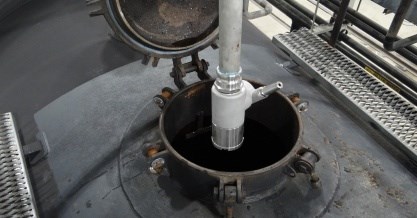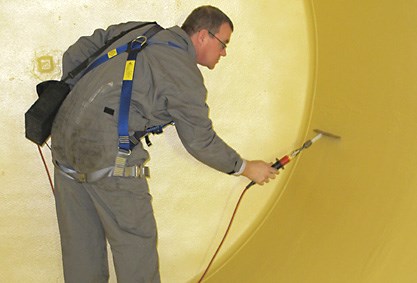 As a comprehensive supplier of equipment and services to the railroad industry, our work takes us from corporate boardrooms to the interior of railcars themselves. While we appreciate the work all Greenbrier and GBW employees perform, it’s the men and women who spend their day inside tank cars and covered hoppers that deserve special recognition.
As a comprehensive supplier of equipment and services to the railroad industry, our work takes us from corporate boardrooms to the interior of railcars themselves. While we appreciate the work all Greenbrier and GBW employees perform, it’s the men and women who spend their day inside tank cars and covered hoppers that deserve special recognition.
Like the cars, SUVs and trucks we drive, freight railcars periodically need basic maintenance to operate safely and efficiently. At GBW Railcar Services, we offer a multitude of maintenance and repair services to keep railcars in good working order. Many of the shops throughout our network offer food grade cleaning as well as the cleaning of ethanol and crude oil tanks.
Cleaning of petroleum products begins with opening the bottom outlet valve to drain as much of the residual liquids as possible. Next the tank is ventilated at the top manway cover. Depending on the commodity, ventilated vapors may have to be routed to a flare for safe destruction. For crude oil tank cars, once residual vapors fall below levels which would ignite if a spark was present, a technician enters the tank to scrape and shovel out the leftover crude oil inside the tank.
Anytime a technician is inside a tank car, a second technician is stationed at the manway monitoring vapor levels and assisting the technician conducting the cleaning. The technician inside the tank car wears protective clothing, a vapor level monitor, a full face air supply, and uses non-sparking scrapers. Safety is our number one priority at all times.
After the interior has been scraped and the technician climbs out of the tank car, a hose delivers steam inside the car to loosen the remaining particles. Food grade cleaning gets 2-3 hours of the steam treatment, while crude oil gets a 4 hour steam bath. For pressure tank cars, which often ship liquefied petroleum gas (LPG) or vinyl chloride monomer (VCM) and do not have a bottom outlet valve, the commodity is vented to a flare before the tank receives steam cleaning.

After the car cools and is scraped a second time, a spinner head is placed in the manway. For crude oil, the spinner head sprays hot diesel, followed by sodium hydroxide, then ambient water to rinse off the remaining residue. For food grade or ethanol cleaning, just ambient water is sprayed in the tank after the steam treatment. Pressure tank cars do not receive any wash after the steam cleaning. Lastly, a compressed air blower runs through the manway for about 1 hour to dry the interior before the car is ready to be put back in service.
The material that drains out of the tanks is packaged up in drums and hauled away to a treatment facility.
To protect against railcar corrosion and ensure commodities are shipped safely, tank cars and some covered hopper cars periodically require new interior lining.
Re-lining a car begins with a technician, climbing inside of a railcar and grit blasting the interior walls to remove the old lining. Once again focusing on safety, the technician wears protective clothing, full face protection and hearing protection. Complete removal of old lining can take 16 hours or more depending on the coating. The majority of the lining and grit is shoveled out the bottom outlet valve with the smaller particles vacuumed out of the car. Next, the interior of the car is prepped by technicians painting a thin layer of coating over the interior welds. When all the prep work is complete, a manual sprayer is used to apply the desired coating material to the interior walls of the railcar. The coating technician uses proper spray technique as well as a wet film thickness gauge to help ensure an even coating. Applying a single coat of lining can take 10 hours.

Filtered air is then run through the interior of the tank car to clear out vapors from the coating. After the new interior lining has dried, an electric mill gauge, also known as a ‘holiday test’, is used to detect any voids in the coating material. Once the entire interior passes inspection, the car goes through a final bake to cure the new coating.
Cleaning, blasting and re-lining are just some of the services GBW provides. To our technicians and inspection personnel who conduct their work inside rail cars, we salute you.
To railcar owners who are in need of fleet maintenance or repair, contact us today to learn more.

